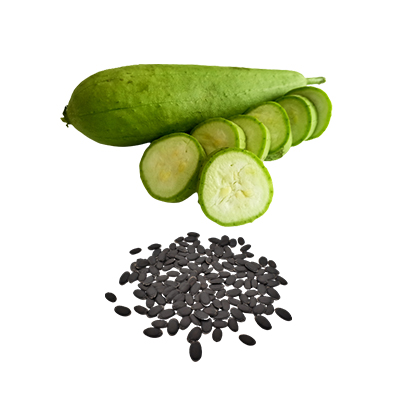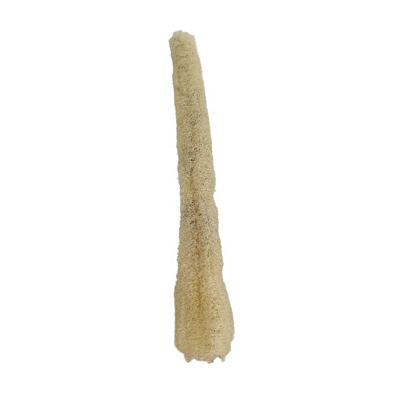Smooth Loofah
Luffa aegyptiaca Mill.
Cucurbitaceae
Location in our garden
Vegetable
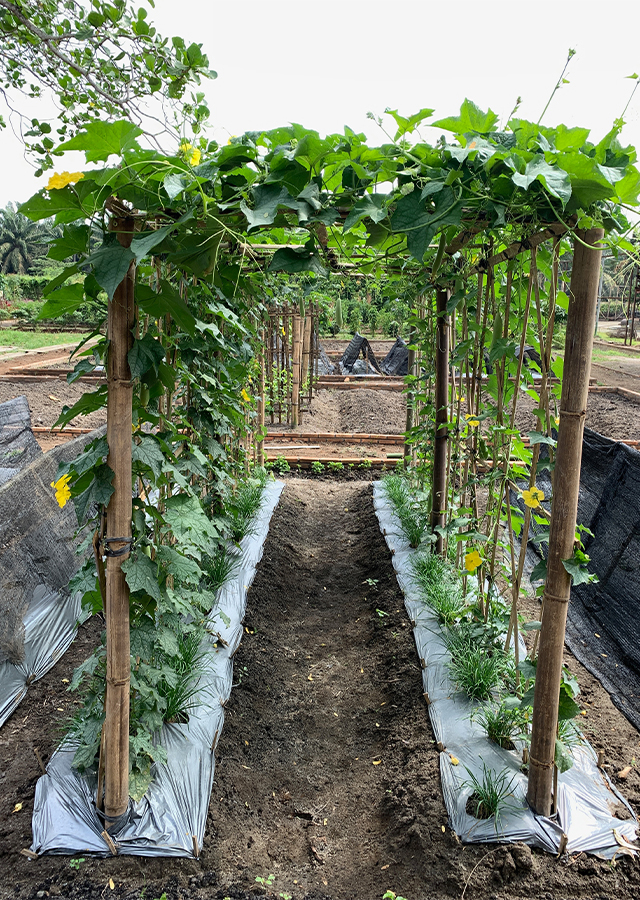
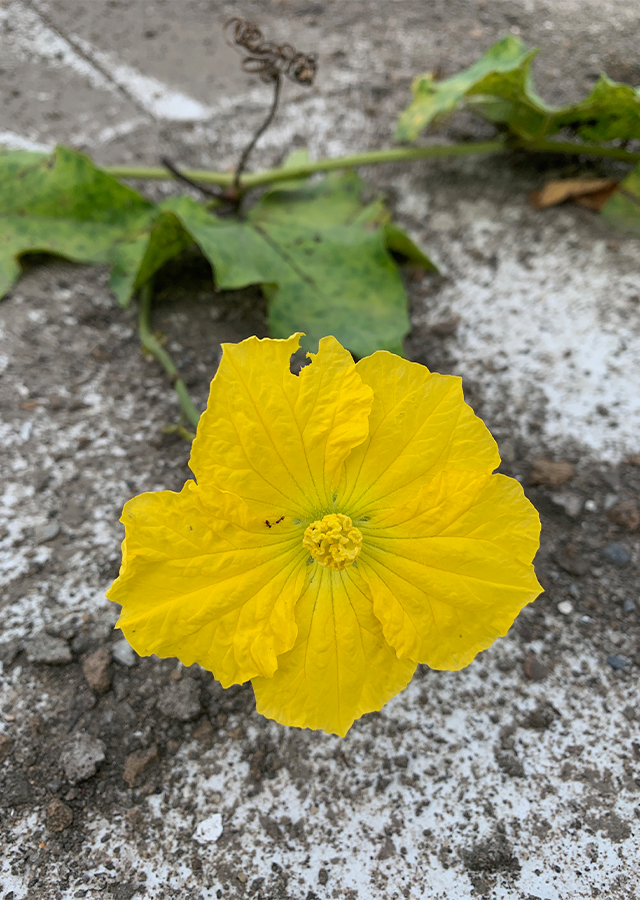
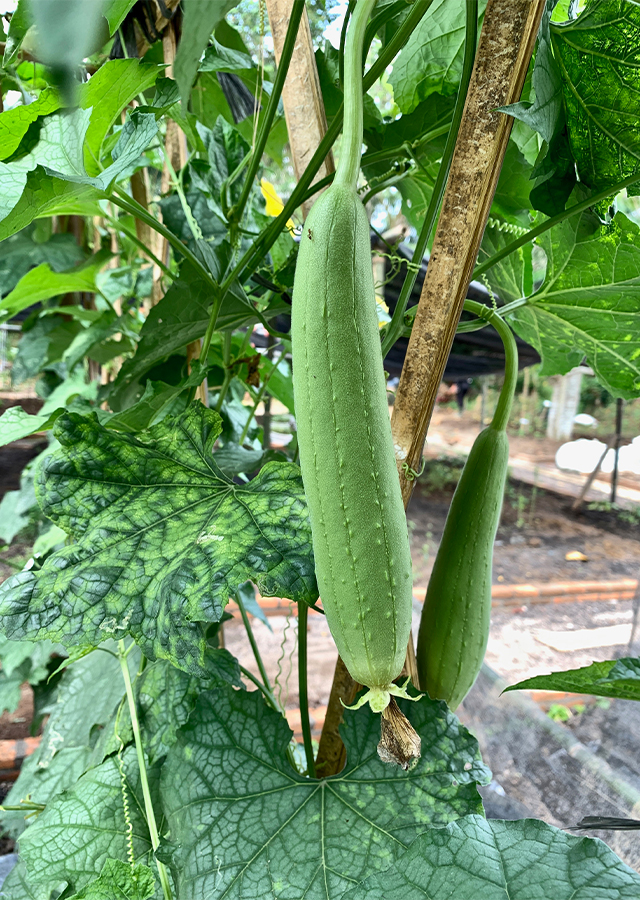
Synonym
Bryonia cheirophylla Wall.
Cucumis pentandrus Roxb. ex Wight & Arn.
Luffa fricatoria Sessé & Moc.
Habitus
Climbers. An annual herb, monoecious, vigorous climbing to a length of 15 m.
Part Used
Leaves
Flowers
Fruit
Roots
Stem
Growing Requirements
Full Sunshine
Habitat
Terrestrial
Overview
The plant is natively lives in Tropical Africa and Asia. It is the primary source of the skin brush or loofah sponge, typically used to clean the body. Often, the plant is used for food and has several common medicinal uses. It is mostly grown in regions of the world that are tropical.
Vernacular Names
Shui gua (Chinese), Loofah (Dutch), Bhatkakrel (India), Hechima (Japanese), Courge cylindrique de chine (French), Luffa-gurke (German), Ketola manis (Malaysia), and Blustru (Indonesia).
Agroecology
In the low humid tropics, up to 500 m altitudes, smooth loofah grows best, prefers rich soils with high organic matter content, good drainage, and 6.5-7.5 pH values. If adequate essential nutrients are supplied, sandy loams can be used.
Morphology
- Stems - green, densely hairy, furrowed, 2-3-fid tendrils, and slender quadrangular.
- Leaves - alternate, large, broad ovate in outline, or reniform, cordate base, scabrous, hairy, punctate, 5–7 lobed, lobes acute and dentate, 6–25 cm by 7–27 cm wide, petiole hispid, 5–10 cm long.
- Flowers - yellow, 5–7 cm across, axillary, unisexual (Plates 1–2). Male inflorescence, 4–20 flowered crowded into a globe, 3–5 cm diameter, calyx tube cylindrical, 5-lobed corolla rotate, yellow, stamens 5. Female flower solitary or in raceme, pentamerous, staminodes 5, ovary smooth, cylindrical.
- Fruits - fusiform, ellipsoid-cylindrical, clavate, elongate-cylindrical, smooth with numerous longitudinal streaks or broken longitudinal streaks 10–50 cm by 5–10 cm wide containing many seeds.
- Seeds - flat ovate, smooth, black, 1–12 cm long with wing-like margin.
Cultivation
- Seeds can be planted in situ or in containers. Place 2 - 3 seeds in each container when sowing in pots, thinning them to the best plant once they have germinated. When they are 15 cm or taller, keep the plants growing quickly and plant out.
- Transplanting is sometimes practised.
Chemical Constituents
Saponins, cumaric acid, apigenin, luteolin, alkaloids, tannins, oleanolic acid, carotenoid, flavonoids, terpenoids, cardiac glykoside, phlobatannins, and steroids.
Traditional Medicinal Uses
Medicinal Uses
- The plant has shown antioxidant, protein-inactivating ribosome, anti-cancer, antiviral, antimitogenic and antipathogenic, immunomodulatory, anti-inflammatory, antidiabetic, and oxytocic.
- It is an antiseptic, antitubercular, carminative, pectoral, cooling, galactagogue, emmenagogue. The root is hydragogue; the seeds are emetic and cathartic; the fruit is considered anthelmintic, carminative, laxative, depurative, emollient, and expectorant diuretic, and lactagogue.
- For tooth decay, ozoena, and bacterial afflictions, vine, and root extracts have been recommended.
Traditional Uses
- Bowel or bladder hemorrhage therapy, hemorrhoids, toothache, smallpox, and scarlet fever.
- The fresh fruit is considered as cooling, demulcent, and beneficial to the intestines, warming to the stomach, and tonic to the genital organs.
- The fruit that is more mature or ripe is purgative.
- To remove dead skin and improve peripheral circulation, the dried fruits are used as abrasive sponges in skin care; used as an emetic.
- The leaf juice has been recorded in Java as being used for amenorrhea.
- Used for snake bites and dysentery in India.
- The leaves are used in the Philippines for skin diseases and orchitis.
Part Used
Reference Sources
- Al-Snafi, A.E. (2019). Constituents and pharmacology of Luffa cylindrica- A review. IOSR Journal Of Pharmacy. Vol.9: 68-79.
- CABI. (No date). Invasive Species Compendium. Luffa aegyptiaca. https://www.cabi.org/isc/datasheet/31693. 20-07-2020.
- Fern, K. (2014). Useful Tropical Plants Database. Luffa aegyptiaca. http://tropical.theferns.info/viewtropical.php?id=Luffa+aegyptiaca. 20-07-2020.
- Lim, T.K. (2012). Edible Medicinal And Non-Medicinal Plants: Vol. 2, Fruits. Springer. pp.320-330.
- StuartXchange. (2018). Philippines Medicinal Plants: Patolang bilog. http://www.stuartxchange.org/PatolangBilog.html. 17-12-2020.



